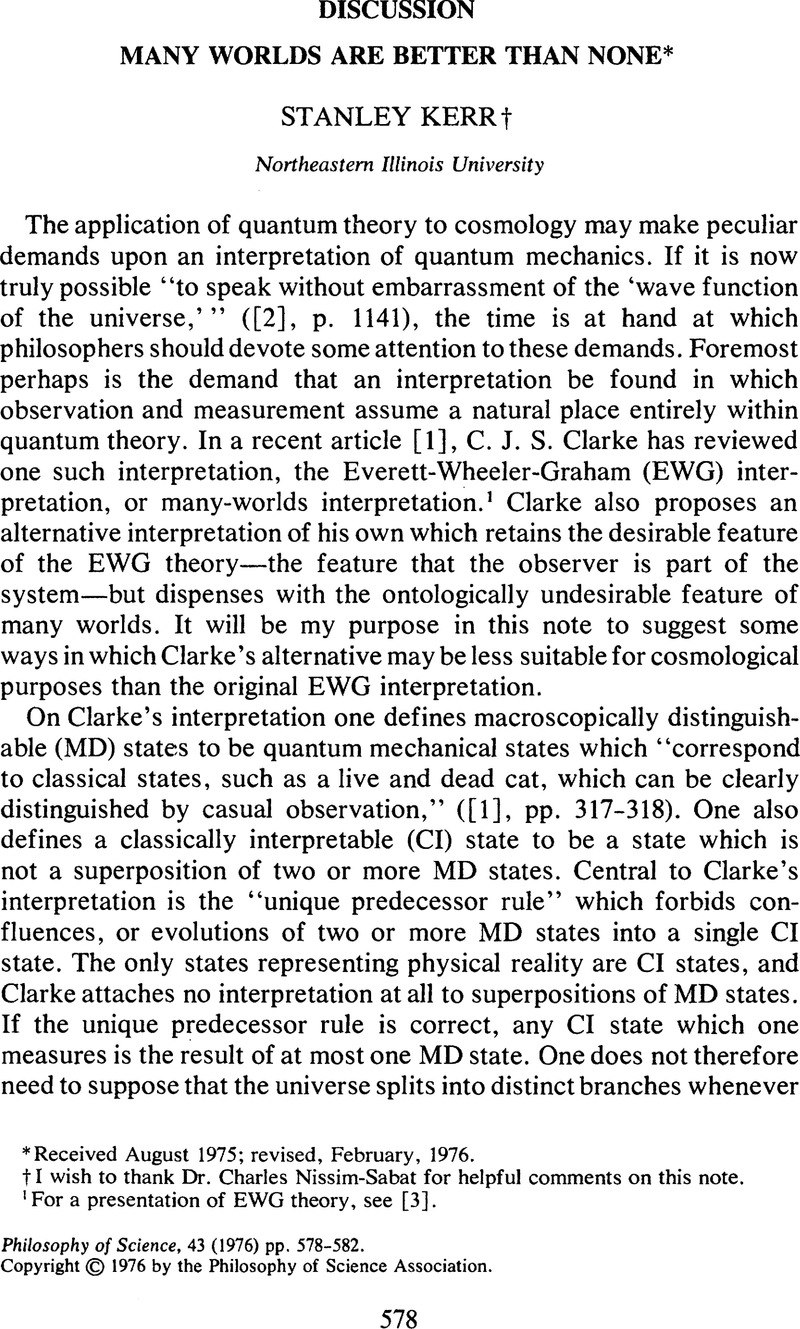Crossref Citations
This article has been cited by the following publications. This list is generated based on data provided by Crossref.
Clarke, C.J.S.
1978.
A general framework for cosmological quantum theory.
Reports on Mathematical Physics,
Vol. 13,
Issue. 3,
p.
369.
Home, D
and
Whitaker, M A B
1987.
The many-worlds and relative states interpretations of quantum mechanics, and the quantum Zeno paradox.
Journal of Physics A: Mathematical and General,
Vol. 20,
Issue. 11,
p.
3339.



